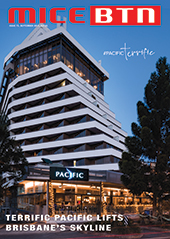Growth trifecta for Perth Airport
- BTN News
- Friday, 18 June 2010
Perth Airport experienced the largest annual growth rate in total passenger numbers (4.5 per cent), followed by Adelaide (2.5 per cent), Brisbane (2.3 per cent) and Melbourne (2.1 per cent).
Sydney Airport registered a 1.1 per cent decline in total passenger movements.
Annual growth in international passenger movements in 2008–09 also was strongest at Perth Airport (4.9 per cent), followed by Melbourne (3.6 per cent) and Brisbane (2.0 per cent).
All five airports registered growth in major domestic airline passenger movements.
Growth in domestic passenger movements also was highest at Perth Airport (5.6 per cent), followed by Adelaide (3.2 per cent) and Melbourne (2.4 per cent), although these growth rates were lower than those experienced in 2007–08.
Brisbane Airport registered the only annual growth (4.2 per cent) in regional airline passenger movements. All four remaining airports experienced a significant decline in regional airline passenger movements in 2008–09. The strongest decline in regional airline passenger movements was Melbourne Airport (16.2 per cent decline), followed by Perth (down 10.4 per cent) and Sydney Airport (8.4 per cent decline).
In 2008–09, Perth recorded the largest increase in total scheduled aircraft movements (14.1 per cent) with significant increases in the domestic (22.1 per cent) and international (15.7 per cent) sectors but a decline of 7.1 per cent in the regional sector. Total scheduled aircraft movements grew by 4.8 per cent at Brisbane and by 1.9 per cent at Melbourne but declined by 1.7 per cent at Sydney and by 0.4 per cent at Adelaide.
Perth Airport also had the largest growth in total aircraft movements (including non-scheduled operations) with an increase of 4.0 per cent compared with 2007–08. This was followed by Brisbane with 3.8 per cent and by Melbourne with 0.6 per cent.
Sydney and Adelaide airports recorded a decline in total aircraft movements.
Non-scheduled aircraft movements declined at all airports with Melbourne Airport having the highest annual decline in 2008–09 of 17.1 per cent, followed by Sydney (11.9 per cent decline) and Perth (11.0 per cent decline).










